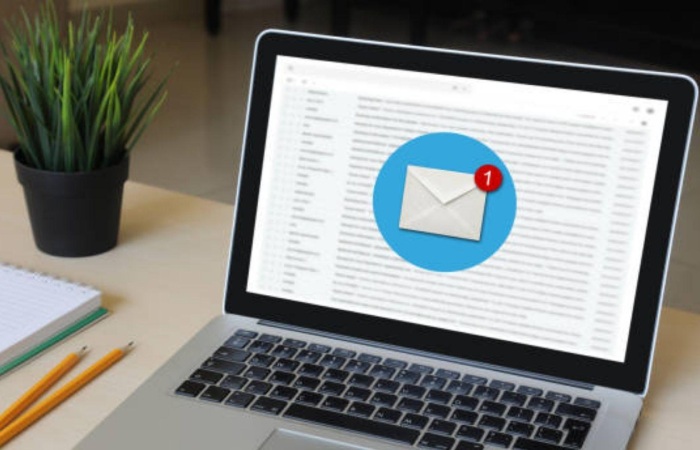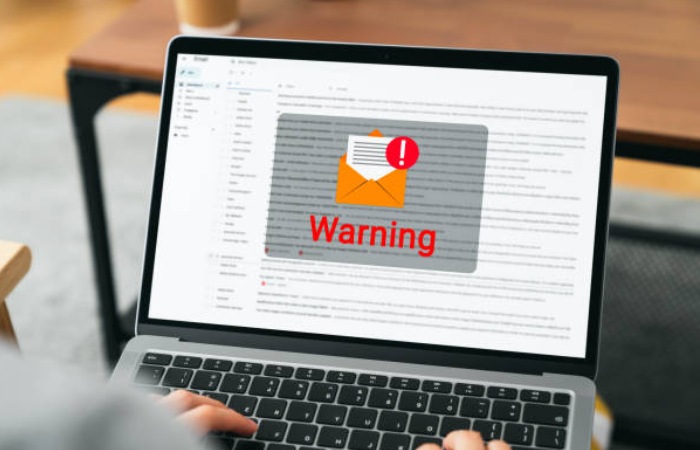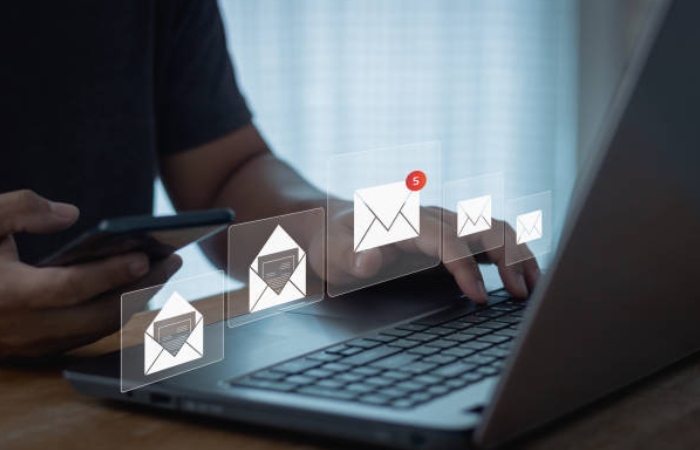Your messages must land in your subscribers’ inboxes to get the most out of your email marketing. That’s why keeping a close eye on your email bound rate is so important. Email bounce rate is an important metric, but digital marketing teams often overlook it. If your email cannot be delivered, your message will not reach your subscribers. But what exactly does bounce rate measure, and how can it be improved?
What Is Email Bounce Amount?

The bounce rate represents the number of emails in a campaign that are “bounced” and not delivered to the intended recipient. A high bounce rate negatively impacts email engagement and deliverability—key performance indicators for any email marketing movement.
There are dual types of email bounces: soft and hard.
- Soft bounces: Often due to inbox overflow, server issues, or even an unusually high volume of emails, soft bounces are temporary delays and typically aren’t much of a problem for marketing teams. Contacts that cause soft bounces need not be directly removed from email lists. However, if complications persist, you may want to remove these addresses as they may affect future deliveries.
- Problematic refusal: A hard return means a permanent delivery failure. This can ensue if the email address is incorrect or the domain expires. Even worse, a harsh rejection may indicate a spam label. You should permanently remove these contacts from your email list when you encounter a hard bounce, as an increased bounce rate can cause the email to be classified as spam (more on this later).
How do you calculate the bounce rate?
Bounce rate is relatively easy to determine, even if your business doesn’t use email marketing software. Use this calculation to assess your campaign’s bounce rate as a percentage:
(Number of emails returned / Number of emails sent) x 100
For example, if your email newsletter reaches 10,000 contacts and gets 15 bounces, your bounce rate will be 0.15 percent.
It would help if you kept a close eye on your bounce rates as they reflect the health of your business’s email list and marketing campaigns.
What is a reasonable email bounce rate?
Even the best email marketers experience bounces occasionally, but it’s worth noting that there are consistent bounces, whether soft or hard. Acceptable failure rates vary slightly by industry but should average less than 2 percent. A bounce rate of 2 to 5 percent is mildly alarming, but anything over 5 percent is a definite cause for concern. This may indicate a problem with the email receiving process or with sending emails in general.
How to Reduce Your Email Bounce Rate

If your email marketing campaigns are experiencing higher bound rates than you’d like, try the following tactics:
1. Scrub your email list regularly.
Some email addresses on your list will undoubtedly become inactive over time. Subscribers can switch to a different email address, and business partners can switch to new companies. These contacts are bounces waiting to happen. You can keep your bounce rate low by systematically cleaning out your email list regularly.
Remove any complex addresses (or some soft) bounces or emails that haven’t been opened in months. You can do this manually or use a third-party service like NeverBounce, which automatically regulates which email addresses are still valid and value your time.
2. Ensure emails aren’t spammy.
Marketing emails should be considerate and exciting, not obnoxious and aggressive. Statista has found that spam makes up 53 percent of emails sent worldwide, and email service providers have cut down on the flow of fake emails and advertisements to reduce the number of weight pills that flood inboxes daily. Your company’s helpful newsletter could be flagged even if it’s not technically spam.
Follow these tips to bypass spam filters:
- Triple-check for corrupted images and other formatting issues.
- Avoid texts commonly used in spam, such as “100% satisfied,” “free,” and “act now.”
- Include business information in the email footer, such as your company address and phone number.
- Use sentence cases and contact names in your topics so they don’t appear impressive.
3. Double your opt-ins – and brand them count.
Deploying a dual opt-in plan when a new subscriber cryptograms up for your marketing emails will assistance protect against spam accounts and bots, so it’s a great way to combat high bounce rates.
Double opt-in requires the Contact to confirm their email address with the initial email they automatically receive upon registration. This will ensure that their email address is correct and will allow you to receive your company’s correspondence. You can also remind your subscriber to enhance your marketing email address to their relations to avoid spam filtering in your emails.
4. Segment email lists by engagement.
Email service providers analyze many metrics to identify spam, including open rate (the percentage of emails sent that are opened) and click-through rate (how much of the email was viewed). Although they are not the most critical factor, they still play an essential role.
Segmenting email lists by engagement is a good practice for marketing departments and businesses, as it helps target your efforts effectively. In this case, you control which contacts had the highest engagement rates in previous email campaigns and send future emails to those people first. This is an easy way to avoid ending up in your spam folder.
5. Send campaigns consistently.
Keeping in touch with the people you care about is the foundation of any relationship, and email marketing is no exception. Suppose you send newsletters or product announcements sporadically or irregularly. In that case, subscribers may forget who you are and why they were employed to receive your emails in the first place, causing them to unsubscribe and mark your emails in the spam folder.
Regular, meaningful campaigns encourage contacts to look forward to your content, ultimately improving your open rates. (Don’t overdo it; too many emails will be intrusive.)
6. Do not buy email lists.
Buying contact lists is never recommended, as it almost always increases your bounce rate. Whether it’s trade show organizers looking to monetize further attendees or services offering carefully curated, industry-specific B2B leads, the promise of instant success in a sea of strangers is just a bait and switch.
The contacts on these email lists have never subscribed to your marketing campaigns and will likely mark your messages as spam. Too many spam emails and the entire domain can block your organization, a complicated and costly problem. The risks associated with purchasing email lists far outweigh any potential benefits. It’s just not worth it.
7. Use your domain.
Sending emails from your domain is another easy way to avoid spam detection, as it gives your business the appearance of legitimacy. While free Gmail or Yahoo accounts may be satisfactory for personal correspondence, professional communications should always come from a company email address.
Most website providers can integrate email with major service providers such as Google, offering a simplified way to stay in touch with your subscribers without triggering spam alarms.
8. Conduct A/B tests.
To determine how emails respond to subscribers, try A/B testing. For this income, you send two slightly different versions of the same email to selected contacts, with the version that gets the most engagement sent to your other contacts. Options you can try include different subject lines, text links instead of call-to-action buttons, and different placement of the main content.
A/B tests are beneficial for reducing bounce rates because they can show which emails are considered spam and, better yet, what your audience likes most.
9. Invite contacts to update their information.
This seemingly obvious approach is often overlooked in email marketing strategies but can make a huge difference. As discussed earlier, people modify their email addresses for many reasons. Some choose to phase out one address and move to another, opening a window of opportunity for businesses that want to stay connected.
A message with a “profile update” form will allow subscribers to notify your company of any changes to their contact data, including email addresses. You can change this data to your primary contact list to avoid primary bounces.
The Best Email Marketing Software For Chasing and Reducing Bounce Rate

Consuming the best email marketing software makes it easy to send frequent bulk emails and can also help you track email KPIs, including bounce rate. Here are some of the best ways to reduce your bounce rate.
Constant Interaction
Constant Contact is an email marketing answer that has been around for a long time and constantly adds new features. One of its unique features is marketing automation. You can set up your explanation to respond to behavioral triggers. For example, if you experience a soft bounce, you can set the system to automatically resend the email or send a link to inform the subscriber’s contact data. With Constant Contact, subscribers can manage their data and account privacy. Please find out more in our full Constant Contact review.
Monday. com
While monday.com is known for its project management platform, it can integrate with external email marketing programs using the data they generate. WorkForms functionality allows you to track campaign progress and KPIs in an easy-to-read columnar format. monday.com helps you coordinate among your team members so everyone has the data they need at their fingertips and can make any necessary changes, such as confiscating bounced email addresses or adjusting copies in future campaigns. Please find out more in our full monday.com review.
Salesforce Marketing Cloud
If you’re already using Salesforce for your CRM, Salesforce Marketing Cloud is a handy addition that can help reduce your bounce rate. You can be more specific with personalization because Salesforce Marketing Cloud collects so much customer data. The more personalized your emails are, the less likely they are to be flagged as spam and the more affianced your subscribers will be, making them more likely to notify you in advance of any changes to their contact information. Please find out more in our full review of Salesforce Marketing Cloud.
HubSpot
Like Salesforce, HubSpot’s email platform is part of a broader set of marketing products. This addition allows you to sync your email movements with the rest of your marketing activities. For example, you can coordinate lead management through your email account to update a contact’s email address when they move to an additional company and fill out a lead form. HubSpot has artificial intelligence capabilities to help you quickly create compelling, modified, gratified.
Email Bounce Rate, A Small then Crucial Metric
Exploiting ROI is the primary goal of any business or marketing department, and email marketing metrics are important performance indicators. Although failure rates are only a tiny part of the puzzle, they must be assessed. They serve as indicators of the health of your email list, giving you the information you need to ensure the success of your future campaigns. Consider this data the foundation of your email marketing strategy, using the techniques above to target soft and hard bounces consistently and effectively.
Email Bounces: Frequently Asked Questions
1. What is an email bounce?
An email bounce occurs once an email cannot be delivered to the recipient’s inbox and is returned to the sender.
2. What are the types of email bounces?
- Soft bounce: Temporary delivery failure (e.g., mailbox full, server issue).
- Hard bounce: Permanent failure (e.g., invalid email address, nonexistent domain).
3. Why do emails bounce?
- Invalid email addresses (typos, outdated contacts).
- Mailbox full (recipient’s inbox is out of space).
- Server issues (temporary technical problems).
- Spam filters blocking your email.
- Blocked domain or IP address.
4. How can I reduce email bounce rates?
- Clean up your mailing list: remove invalid addresses. Use double opt-in: verify new subscribers.
- Authenticate emails: use SPF, DKIM, and DMARC.
- Avoid spammy content: avoid excessive capitalization and suspicious links.
- Send from a trusted domain: avoid free email providers (e.g., @gmail.com).
5. What is an acceptable bounce rate?
A bounce rate below 2% is ideal. A higher value may indicate quality issues with the ad.


